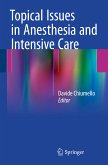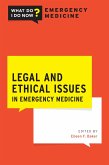Dieser Download kann aus rechtlichen Gründen nur mit Rechnungsadresse in A, B, BG, CY, CZ, D, DK, EW, E, FIN, F, GR, HR, H, IRL, I, LT, L, LR, M, NL, PL, P, R, S, SLO, SK ausgeliefert werden.
"This is a collection of articles on a wide range of issues particular to the disciplines of surgery and anesthesiology and the unique relationship they share. Each chapter starts with a case scenario that is discussed and analyzed within its own specific context. ... the book is intended for medical professionals, both in practice and in training, as well as educational institutions and hospital committees. This is an effective educational tool for all these audiences, including nonphysicians." (Brandy M. Fox, Doody's Book Reviews, September, 2016)









